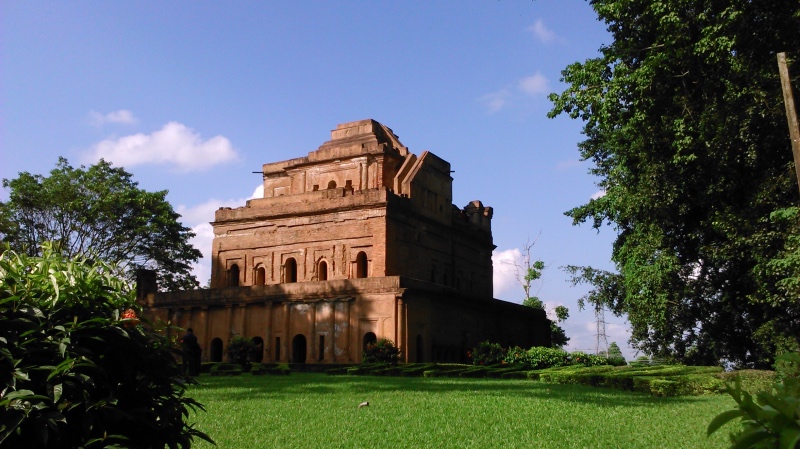Umananda Island
Umananda Island (from Assamese Uma, another name for the Hindu goddess Parvati, the wife of Shiva; and ananda, “happiness”) is the smallest river island in the midst of river Brahmaputra flowing through the city of Guwahati in Assam, a state in northeast India. The British named the island Peacock Island for its structure. The island can be reached via 10 minute ferry, available from Umananda Ghat, located near Guwahati Highcourt.


Mājuli
Mājuli or Majoli is a river island in the Brahmaputra River, Assam and in 2016 it became the first island to be made a district in India. It had an area of 880 square kilometres (340 sq mi) at the beginning of the 20th century, but having lost significantly to erosion it covers 352 square kilometres (136 sq mi) as at 2014. Majuli has shrunk as the river surrounding it has grown. Majuli is currently listed as the world’s largest river island in the Guinness Book of World Records.
Kareng Ghar
Kareng also known as The Garhgaon Palace, is located in Garhgaon 15 kilometres (9.3 mi) from Sivasagar, in Upper Assam, India. Of all Ahom ruins, the Kareng Ghar is one of the grandest examples of Ahom architecture. The palace structures were made of wood and stone. In 1751 Sunenphaa, son of Sukhrungphaa, constructed the brick wall of about 5 kilometres (3.1 mi) in length surrounding the Garhgaon Palace and the masonry gate leading to it. Rangpur was the capital of the Ahom Kingdom and served as its military station.


Manas National Park
Manas National Park or Manas Wildlife Sanctuary is a national park, UNESCO Natural World Heritage site, a Project Tiger reserve, an elephant reserve and a biosphere reserve in Assam, India. Located in the Himalayan foothills, it is contiguous with the Royal Manas National Park in Bhutan. The park is known for its rare and endangered endemic wildlife such as the Assam roofed turtle, hispid hare, golden langur and pygmy hog. Manas is famous for its population of the wild water buffalo
Tea Garden
Famed worldwide for the captive taste of its tea, Assam is world’s largest tea-plantation area (sprawling over an area of 216200 hectares). The tea gardens add further charm to Assam’s already picturesque panorama. More than 100 tea estates have their gardens here in Assam; like Tata Group of Companies, Williamson Tea Estates, Ambika and Jamirah. With the beginning of March, the cropping season starts and lasts till December. Topping the charts in tea-garden tourism, the plantation is spread on the banks of Brahmaputra River.


Bihu Dance
The Bihu dance is an indigenous folk dance from the Indian state of Assam related to the Bihu festival and an important part of Assamese culture. Performed in a group, the Bihu dancers are usually young men and women, and the dancing style is characterized by brisk steps, and rapid hand movements. The traditional costume of dancers is colorful and centred round the red colour theme, signifying joy and vigour.
Rang Ghar
The Rang Ghar is a two-storeyed building which once served as the royal sports-pavilion where Ahom kings and nobles were spectators at games like buffalo fights and other sports at Rupahi Pathar (pathar meaning “field” in Assamese) – particularly during the Rongali Bihu festival in the Ahom capital of Rangpur. It is 3 km away from the center of Sivasagar Town. Situated by the side of the Assam Trunk Road, it lies to the northeast of the Rangpur Palace, a seven-storied royal complex comprising the Talatal Ghar and the Kareng Ghar.


Saraighat Bridge
Saraighat Bridge is the first rail-cum-road bridge constructed over the Brahmaputra River in Assam. Giving details of the construction of the historic bridge, Railway sources said that the total cost of construction was around Rs 10.65 crore and the total length of it is 4258 feet. The road is 24 feet wide with six feet wide footpath on both sides. The Lachit Borphukan Park is situated on the south end and Chilarai Park situated on the north end of the bridge.
